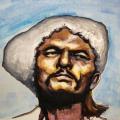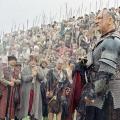An interesting route around the Politekhnicheskaya and Akademicheskaya stations. Station "Polytechnicheskaya"
38, 40, 55, 61
4, 13, 21, 34, 50
10, 10a, 94, 240a, 240b, 252, 252a, 271, 298, 321
cellular connection:
 "Polytechnic"- station of the St. Petersburg metro. Part of the Kirovsko-Vyborgskaya line, located between the Ploshchad Muzhestva and Akademicheskaya stations.
"Polytechnic"- station of the St. Petersburg metro. Part of the Kirovsko-Vyborgskaya line, located between the Ploshchad Muzhestva and Akademicheskaya stations.
After renovation in 2009, the original architectural design of the station was lost. Travertine has been replaced with porcelain stoneware, anodized aluminum with painted siding-type panels.
Prospects
Reconstruction options appear from time to time, but the metro pavilion next to the church has not yet been rebuilt. The head of the St. Petersburg Metro confirms that the station is awaiting its turn for reconstruction. The reconstruction period is still unknown.
It is planned to reconstruct the lobby with the construction of a multifunctional commercial complex up to 18 meters high " while maintaining the visual relationship of the most valuable objects architectural complex- a historical and cultural monument federal significance“St. Petersburg Polytechnic Institute of Emperor Peter the Great” and the Church of the Intercession of the Virgin Mary».
Path development
Behind the station there are two branches without rails, which end in dead ends after 20-30 m. They extend outward from the main tunnels (like the dead-end tracks of the Prospekt Prosveshcheniya station).
These branches are the groundwork for the construction of the branch "Polytechnicheskaya" - "Svetlanovsky Prospekt" - "Lunacharsky Avenue" - "Culture Avenue". According to 2011 data, construction of this branch is planned after 2025.
Ground transportation
Bus routes
| № | Transplants | Destination 1 | Destination 2 |
|---|---|---|---|
| 69 | - | Roadside alley | Polytechnic |
| 94 | - | Streams | Black River |
| 143 | Prospect Education | Zhenya Egorova street | Polytechnic |
Tram routes
| № | Transplants | Destination 1 | Destination 2 |
|---|---|---|---|
| 38 | Academic | Mechnikov Avenue | Vyborgskaya |
| 40 | Courage Square | Tikhoretsky Avenue | Lenin Square |
| 55 | Prospect Education | Roadside alley | Shavrov street |
| 61 | Courage Square | Suzdal Avenue | Kushelevka |
Trolleybus routes
| № | Transplants | Destination 1 | Destination 2 |
|---|---|---|---|
| 4 | - | Black River Komendantsky Avenue An excerpt characterizing Politekhnicheskaya (metro station)As soon as the lancers went down the mountain, the hussars were ordered to move up the mountain, to cover the battery. While the hussars were taking the place of the lancers, distant, missing bullets flew from the chain, squealing and whistling.This sound, not heard for a long time, had an even more joyful and exciting effect on Rostov than the previous sounds of shooting. He, straightening up, looked at the battlefield opening from the mountain, and with all his soul participated in the movement of the lancers. The lancers came close to the French dragoons, something was tangled there in the smoke, and five minutes later the lancers rushed back not to the place where they stood, but to the left. Between the orange lancers on red horses and behind them, in a large heap, were visible blue French dragoons on gray horses. Rostov, with his keen hunting eye, was one of the first to see these blue French dragoons pursuing our lancers. Closer and closer the lancers and the French dragoons pursuing them moved in frustrated crowds. One could already see how these people, who seemed small under the mountain, collided, overtook each other and waved their arms or sabers. Having received the news of Natasha’s illness, the Countess, still not entirely healthy and weak, came to Moscow with Petya and the whole house, and the entire Rostov family moved from Marya Dmitrievna to their own house and completely settled in Moscow. |
« Polytechnic » - station of the St. Petersburg metro, part of the Kirovsko-Vyborgskaya line, located between the Akademicheskaya and Ploshchad Muzhestva stations.
Station history
« Polytechnic » opened on December 31, 1975 as part of the Lesnaya - Akademicheskaya section.
History of the name
The choice of the name of the station was determined by the nearby Leningradsky polytechnic institute(modern St. Petersburg State Polytechnic University). The design name of the station is “Kalininskaya”.
Description of the station
Travertine was used to decorate the track walls of the station, the floor is laid with gray granite, and the metal finishing parts are the color of old copper. In 2003, the lighting at the station was replaced: mercury lamps white replaced with orange sodium ones. After renovation in 2005, the stone trim of the end walls of the station was covered with metal-plastic panels.
Specifications
"Politekhnicheskaya" - one of the first two Soviet stations similar type(the second is “Courage Square”). This is a single-vaulted deep station with an island platform, located at a depth of approximately 65 m. Architects of the underground hall project: S. B. Speransky, N. V. Kamensky, L. G. Badalyan.
Lobbies and transfers
The station has one ground lobby connected to the underground hall by three escalators. The exits from the lobby, located on Polytechnicheskaya Street next to the Church of the Intercession and Ioffe Square, lead to Polytechnicheskaya Street.
Attractions
Next to the station is the Children's Integration Theater "Dolls" (St. Petersburg Theater Public Institution "Salt"). The theater is adapted for children with musculoskeletal disorders, and the performances are intended for children with hearing impairments and children with developmental disabilities, but everyone will be interested in watching them. Also nearby is the St. Petersburg State Park Polytechnic University.
Ground infrastructure
Near the station there are quite a lot of higher educational institutions and research institutes: the main building and buildings of St. Petersburg State Polytechnic University, Institute of Cytology of the Russian Academy of Sciences, Institution of the Russian Academy of Sciences St. Petersburg Academic University- Scientific and Educational Center for Nanotechnologies of the Russian Academy of Sciences (St. Petersburg Autonomous Institution Research Center for Science and Technology of the Russian Academy of Sciences), Physicotechnical Institute named after. A.F. Ioffe RAS, JSC Scientific and Production Association for the Research and Design of Power Equipment named after. I.I. Polzunov", Military Academy of Communications named after. CM. Budyonny, Research Institute of Television, Research Institute of Phthisiopulmonology.
Useful facts
Parking and ride-hailing is available near the station.
The station lobby is open to passengers from 05:37 to 00:39.
During the construction of Polytechnicheskaya, during the excavation of an inclined passage, an ancient horizontal underground excavation was discovered at a depth of 16 meters, which was artificially collapsed for safety reasons.
The station became the location for filming one of the episodes of the film “Day Watch”.
During the era of erosion (1995-2004), the station was the least crowded in the St. Petersburg metro.
The Stela of a Happy Family is the only monument in the city dedicated to family and home. The eight-meter-tall sculptural composition is installed in the center of the park near the Akademicheskaya metro station, on the Alley of a Happy Family. It is crowned with a popular symbol of home comfort, peace and security - a nest with a family of storks. Not far from the square there is a new Wedding Palace.
st. Vernosti, no. 4Monument to Chapaev
The monument to Chapaev is a grandiose sculptural composition, one of the largest monuments in the USSR. The dynamic and monumental work of the sculptor Manizer impresses not only with its complex composition, which depicts the legendary Chapai in a burka and papakha surrounded by popular attributes Civil War, but also in its size. The bronze alone from which it was cast weighed more than 12 tons.
Tikhoretsky Prospekt, 3The low, classically austere old building of the Physico-Technical Institute with a portico at the entrance and the coat of arms of the USSR on the pediment looks peaceful and cozy at home. At first glance, you would never think that this is exactly the place where the legendary scientists Ioffe, Semenov, Landau, Alferov, Kurchatov, Kharitonov worked and the foundations of the Soviet nuclear research program were created.
st. Politekhnicheskaya, 26Politechnical University
Politechnical University - educational institution with a rich and glorious history. It was created in 1899 under active participation Dmitry Mendeleev and built in the form of a closed institute campus with educational, residential and utility buildings based on the model British universities, for which people called it “Russian Cambridge”. The courtyards of the university are decorated with a variety of original sculptures, from a monument to a student of pre-revolutionary years to conceptual wire men.
st. Politekhnicheskaya, 29Hydraulic tower of the Polytechnic University
The hydraulic tower, built in 1905, is one of the main attractions of the Polytechnic University. Its elegant outlines resemble a temple bell tower, but in fact the functions of this original structure are much more practical. The tower is part of a hydraulic laboratory and at the same time an educational building.
st. Politekhnicheskaya, 29Monument to Lovers
A touching sculptural composition depicting a couple in love, installed in a public garden on Grazhdansky Avenue, was originally called “Two under an umbrella.” However, the umbrella itself was subsequently dismantled, which is why local residents lost one of the romantic beliefs. It was believed that a person who tied a ribbon to an umbrella would definitely meet true love or will significantly strengthen mutual understanding with the “soul mate” you have already met.
Grazhdansky Ave., 21/2 The image of Taras Bulba in the story "Taras Bulba"
The image of Taras Bulba in the story "Taras Bulba" The image and characteristics of Ostap from the story “Taras Bulba” by Gogol with quotes
The image and characteristics of Ostap from the story “Taras Bulba” by Gogol with quotes Where is it better for a beginner to start?
Where is it better for a beginner to start?